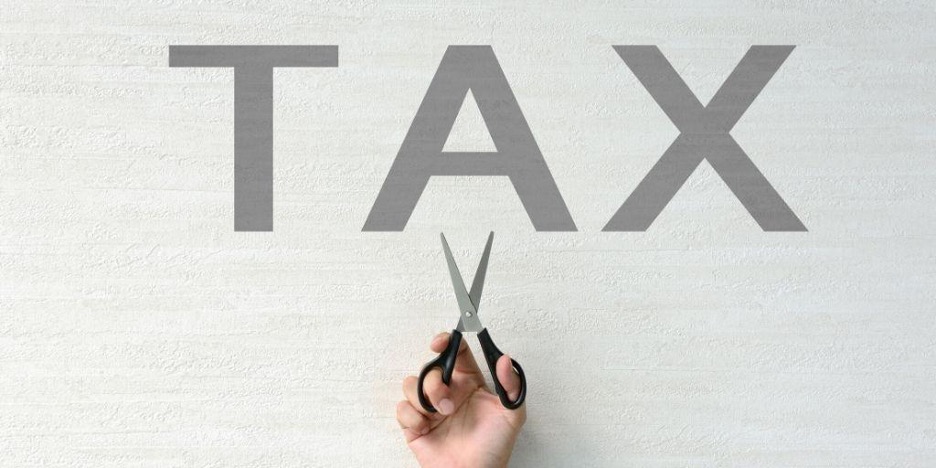June 6, 2024
5 Strategies for Saving Taxes in Retirement

By Chris Palabe, CFS®, AIF®
When you picture your retirement and all its possibilities, taxes might not be the first thing on your mind. Typically, taxes come into focus around February, and after filing your return a month or two later, they often fade into the background. Yet, if you hope to reduce your tax burden, it’s crucial to keep taxes top-of-mind all year long. This is particularly vital during retirement, when you’re tapping into your accounts for income instead of adding to them. So, let’s explore five tax-efficient strategies to trim taxes in retirement.
1. Limit Your Exposure to the 3.8% Medicare Surcharge Tax
There is a 3.8% Medicare surcharge tax (1) that applies to net investment income for singles with a modified adjusted gross income (MAGI) of over $200,000 and couples with a MAGI over $250,000. The MAGI is adjusted gross income with some deductions added back in, such as tax-free foreign income, IRA contributions, and student loan interest. The surcharge tax is due on the smaller of net investment income (which includes interest, dividends, annuities, gains, passive income, and royalties) or the excess of MAGI over the thresholds.
If your MAGI is near or above the thresholds, there are steps you can take to limit your exposure. First, you will want to review the tax efficiency of your investment holdings. It may be worthwhile to move less efficient investments into tax-deferred accounts and capitalize on tax-loss harvesting. Other moves you can make include investing in municipal bonds, which have tax-free interest, and taking capital losses to offset gains. Installment sales can spread out large gains and minimize your adjusted gross income, and real estate like-kind exchanges can also defer gains and their taxability.
2. Utilize Roth IRA Conversions
Distributions from Roth IRAs are tax-free, so they are a great tool to have in retirement. However, many people cannot contribute directly to a Roth IRA because of income limitations. (2) Instead, you have to convert traditional IRA funds to a Roth account by paying the related income taxes. You can take advantage of low-income years, such as when you have stopped working but are not yet collecting Social Security, to convert your funds to a Roth IRA so you’ll have tax-free income later. It is important to be mindful of tax brackets when you do conversions so you don’t inadvertently push yourself into higher tax rates.
3. Take Advantage of the 0% Rate on Long-Term Capital Gains
If the Medicare surcharge tax does not apply to you because you have not reached the MAGI thresholds, then you may be able to take advantage of the 0% long-term capital gains rate. Profits on the sales of assets owned over a year are tax-free if your taxable income is below $47,025 for singles or $94,050 for married couples filing jointly. Once you exceed those thresholds, long-term capital gains are taxed at 15% until your taxable income gets above $518,900 for singles or $583,750 for couples, at which point the tax rate goes up to 20%. (3)
Claiming more deductions or making deductible IRA contributions can help keep your taxable income within the 0% capital gains tax range while also providing their usual tax benefits. However, you will want to be strategic about taking tax-free gains as they can raise your adjusted gross income and affect the taxability of your Social Security benefits. Also, taking those gains may incur state tax liabilities as well.
4. Be Strategic About Inherited IRAs
At the beginning of 2020, the laws surrounding IRAs inherited by non-spouses changed. You no longer have to take out a specific amount of money from the account each year, but you do have to empty the account within 10 years. If you fail to be strategic about withdrawals, you could be forced to empty the entire account at once with 10 years’ worth of growth. The problem with that is that it could greatly increase your taxable income for the year, likely pushing you into higher tax brackets and subjecting you to added taxes, like the Medicare surcharge tax. If you inherit an IRA from someone other than your spouse, you need to be strategic about your withdrawals and time them so as to limit your tax liability.
5. Donate Effectively
If you are charitably inclined, one of the best ways to save on taxes is through donations. You may be able to get a tax deduction on donations up to 60% of your adjusted gross income. (4) If you have appreciated assets, the tax savings could be even greater. When you donate an appreciated asset that you have owned for over a year, such as stocks, to a charity, you do not have to pay capital gains taxes on the appreciation, but you still get to claim the full value for your deduction. This allows you to avoid the capital gains tax altogether. If your assets have declined in value, it is best to sell them yourself and donate the proceeds so you can claim the loss when filing your taxes.
Another strategy to consider is the use of a charitable lead annuity trust or a donor-advised fund, which allow you to take an up-front write-off that can help offset other income, such as from a Roth IRA conversion or withdrawal from an inherited IRA.
How We Can Support
As you can see, there are several tax-efficient retirement strategies you can take to reduce your tax load in your golden years. However, because the tax code and regulations are always changing, you’ll need to know specific factors in order to execute these strategies effectively.
The good news is, you don’t have to tackle this alone! If you’re thinking about these approaches, team up with a seasoned financial advisor to guide you through the tax complexities to boost your confidence in your retirement plan.
If you’re yet to find a trusted advisor, I’m eager to discuss how our team at Palabe Wealth could assist you. Schedule a 15-minute introductory phone call or call us at 847-249-6600 to learn if we are the right fit for your financial goals.
The opinions voiced in this material are for general information only and are not intended to provide specific advice or recommendations for any individual.
Bonds are subject to market and interest rate risk if sold prior to maturity. Bond values will decline as interest rates rise. Bonds are subject to availability, change in price, call features and credit risk. (116-LPL)
There is no guarantee that a diversified portfolio will enhance overall returns or outperform a non-diversified portfolio. Diversification does not protect against market risk.
Traditional IRA account owners have considerations to make before performing a Roth IRA conversion. These primarily include income tax consequences on the converted amount in the year of conversion, withdrawal limitations from a Roth IRA, and income limitations for future contributions to a Roth IRA. In addition, if you are required to take a required minimum distribution (RMD) in the year you convert, you must do so before converting to a Roth IRA. (22-LPL)
Asset allocation does not ensure a profit or protect against a loss. (34-LPL)
All investing involves risk including loss of principal. No strategy assures success or protects against loss.
This material was prepared for Palabe Wealth Inc.’s use.
This information is not intended to be a substitute for specific individualized tax advice. We suggest that you discuss your specific tax issues with a qualified tax advisor.
__________________
(1) “Find Out if Net Investment Income Tax Applies to You,” IRS, February 7, 2024
(2) “Roth IRA Contribution and Income Limits 2024,” NerdWallet, April 16, 2024
(3) “What is the Long-Term Capital Gain Tax?” BankRate, March 13, 2024
(4) Charitable Contribution Deduction: Tax Years 2023 & 2024”, Investopedia, January 8, 2024

Chris Palabe, CFS, AIF®
Chris Palabe is the CEO and a Financial Advisor at Palabe Wealth, a firm that provides exceptional expertise in the Financial Planning space. For over 25 years, he has cultivated a deep understanding of the complexities of wealth management and retirement planning, making him a valued advisor to both Plan Sponsors of 401(k) plans and Individual Investors.
Holding esteemed designations such as Certified Fund Specialist (CFS) and Accredited Investment Fiduciary (AIF), Chris showcases his commitment to upholding the highest standards of investment advice and fiduciary responsibility in his advisory relationships. These designations are a testament to his knowledge and dedication to providing clients with sophisticated and ethical financial guidance.
He holds his Series 6, 7, 63, and 65 licenses through LPL Financial, which qualify him to offer a broad range of financial products and services.
Chris’s distinguished career is characterized by his unwavering commitment to his clients' financial well-being. He focuses on crafting tailored strategies that aim to optimize retirement outcomes and financial independence. He continually strives to help the individuals he works with on their path towards financial success.
Over the years Chris has refined a consistent, strategic investment philosophy supported by a significant body of academic research. He believes that a widely diversified portfolio of investments tailored to each client’s unique risk tolerance and financial goals is the key to their financial success.
Beyond his professional achievements, Chris has a profound passion for dressage, a highly skilled form of horse riding performed in exhibition and competition. This discipline requires a remarkable level of dedication, precision, and harmony between rider and horse, qualities that mirror his approach to financial planning.






